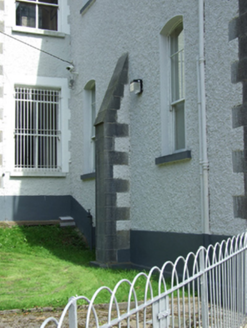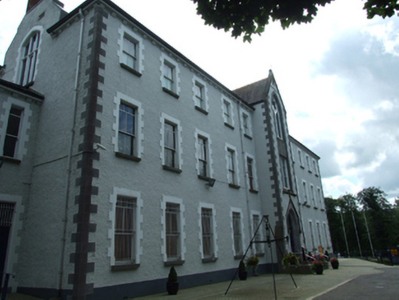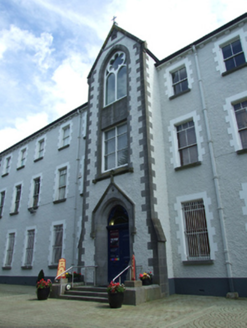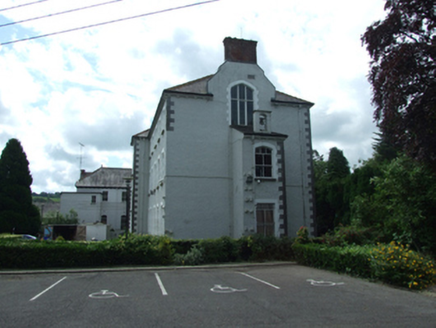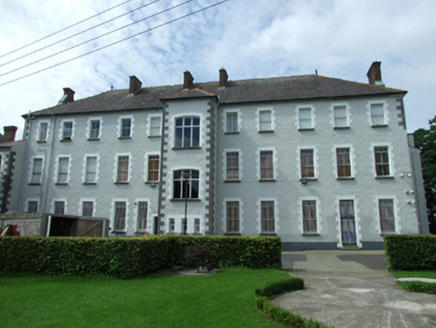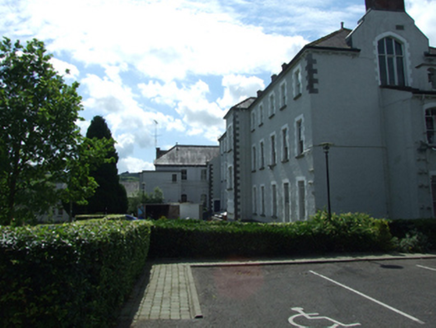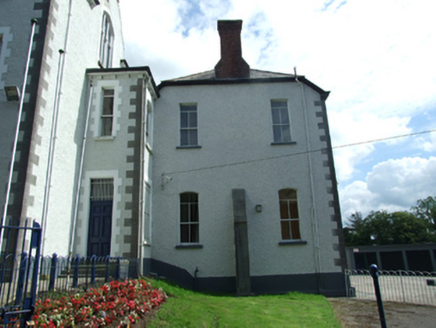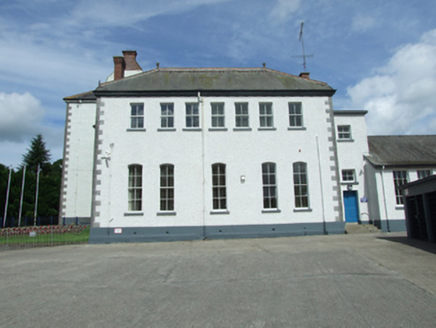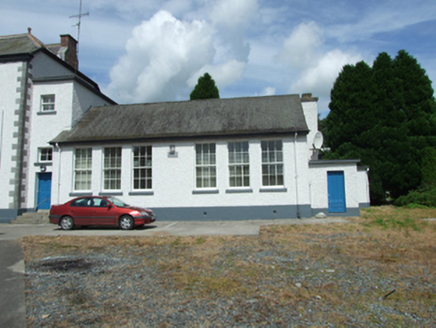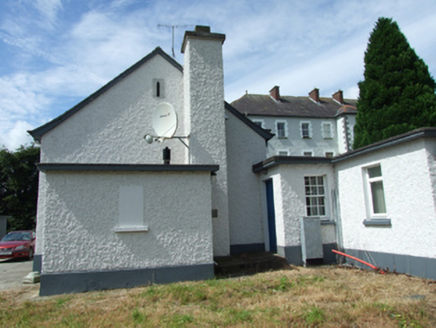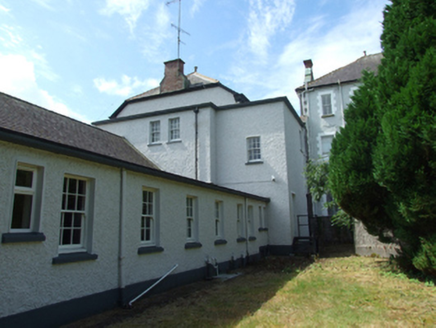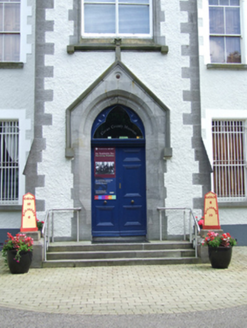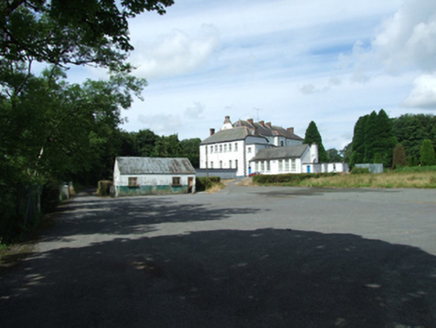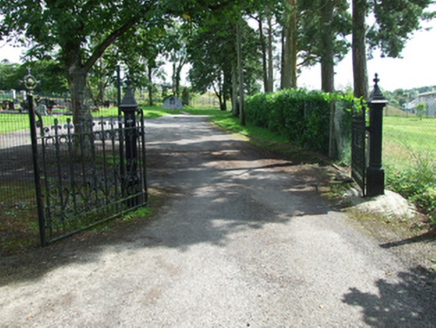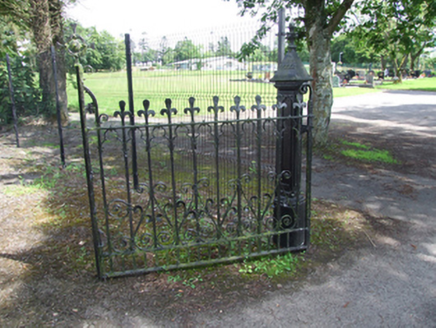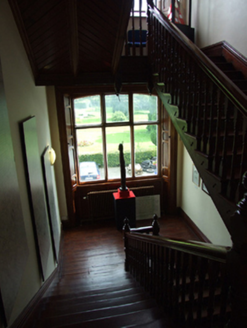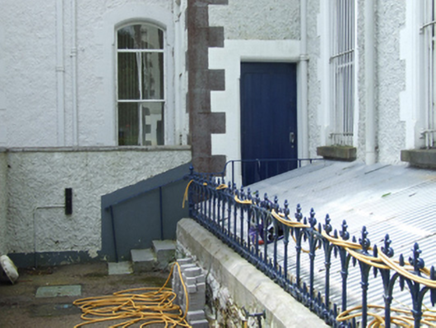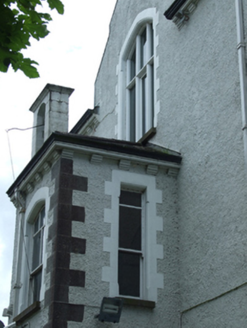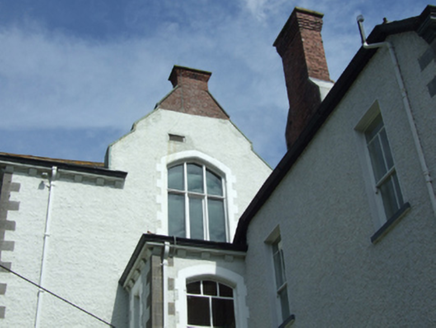Survey Data
Reg No
40305009
Rating
Regional
Categories of Special Interest
Architectural, Artistic, Historical, Social
Previous Name
The Poor Sisters of St Clare Convent
Original Use
Convent/nunnery
Historical Use
School
In Use As
Museum/gallery
Date
1880 - 1885
Coordinates
252631, 291100
Date Recorded
25/07/2012
Date Updated
--/--/--
Description
Detached L-plan multiple-bay three-storey convent, built 1883, with advanced gabled breakfront to front and hip-roofed breakfront to rear, two-storey projecting bay to north with bellcote, seven-bay two-storey wing to south. Now in use as museum. Hipped slate roof with clay ridge tiles, brick chimneystacks to ridge and gable walls, cast-iron rainwater goods, stepped eaves corbels. Gable fronted breakfront with limestone barge coping. Roughcast rendered walls with cut-limestone quoins and smooth rendered plinth. Two-over two timber sash windows to front and rear of main block having three-pane upper section at ground and first floors, cut-stone block-and-start surrounds and sills. Entrance breakfront having pointed-arched timber twin-light tracery at second floor with multiple-foil roundel and square-headed timber casement window at first floor, both set within pointed arch recess. Pointed limestone recessed door surround having hood moulding and timber panelled double-leaf door with single-pane trefoil cusped overlight. Limestone piers and plinth flanking steps with recent stainless steel handrails. Tudor-arched tripartite windows at second floor of north and south gables with block-and-start surround. Rear breakfront having two segmental-headed tripartite windows in same surrounds, with three small square-headed timber sash windows at ground floor. South block having half-hipped slate roof, block-and-start quoins, two-over-two timber sashes at first floor closely-spaced and set in from corners. Tall four-over-four segmental-headed timber sash windows at ground level in two pairs to outer bays and single window to centre bay. Two bay west gable with central wall buttress and shouldered brick chimneystack. Several secondary door openings having stone surrounds, timber panelled doors, and single pane overlights. Attached former primary school wing to east, built 1956, comprising single-storey six-bay with single bay two-storey flat-roofed link, and single storey multi-bay flat-roof wing to north, now in use as education centre. Pitched slate roof, with clay ridge tiles, rendered chimneystack to east gable, cast-iron rainwater goods. Roughcast render walls over smooth rendered plinth, six-over-six timber sash windows in two groups of three with patent reveals and concrete sills, replacement uPVC windows to rear, timber panelled doors. Concrete flat-roofed colonnaded play shelter to south. Square-profile rendered piers with wrought-iron gates. Cast-iron piers and wrought-iron gates to south-east providing access to cemetery.
Appraisal
This former convent built by the Poor Sisters of St Clare was designed by the inventive and prolific Cavan architect William Hague (1840–1899), architect of many significant churches in the county. It is a well-maintained, well-proportioned, and handsome structure, enlivened by cut stone quoins and window surrounds, while the roofline is embellished with interesting details and features. The building is a fine example of nineteenth century institutional architecture with many of its sash windows, internal shutters, and interior features intact. The school extension and play shelter are also of interest, being a variant on a pattern design for primary schools built across Ireland by the OPW from the 1930s to the 1960s, associated with the school's architect Basil Boyd Barrett (1908-1969). The former convent has played an important role in the social, religious, and educational history of Ballyjamesduff, and now serves the community as a museum.
